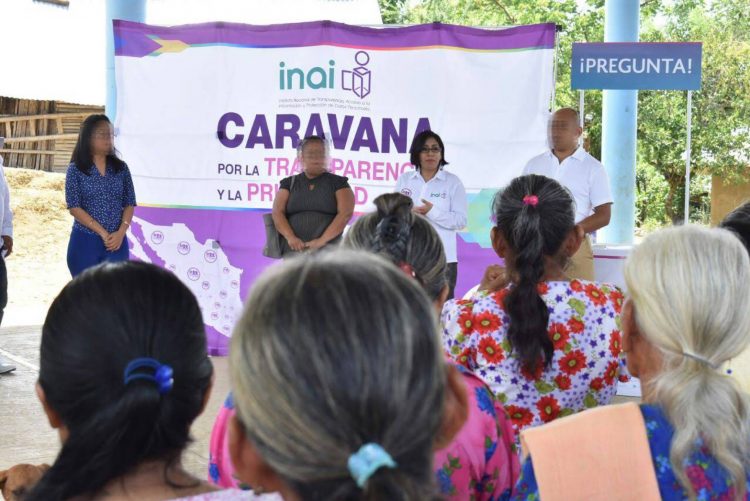By Ana Isabel García Quesada, consultant for the European Union's EUROsociAL+ programme regarding gender and access to the right to public information within the framework of the Transparency and Access to Public Information Network (RTA)

The second phase of the project promoted by the Network for Transparency and Access to Public Information (RTA, https://redrta.org/) and EUROsociAL+, the European Union’s cooperation programme with Latin America (https://eurosocial.eu/), on gender determination in the region and access to the right to public information (DAIP). It does so within the unexpected scenario of the Covid-19 pandemic which increases the importance of this right. Unfortunately, the pandemic arrived too early, when the right to public information was not yet deeply rooted in the population of the various Latin American countries and its regulatory and action systems had only been in operation for a few years.
As was said at the end of 2019, we still know very little about the real impact of this right on the quality of democracy and the lives of the people: “It is still a fairly unknown right and rarely used by citizens” (Díaz, 2019). But at least one growing certainty has emerged: the answer that can be given in terms of the right to public information will have to take into account the conditions in which women and men have access to this right.
The aforementioned project started in 2018 with a basic aim: “To improve knowledge regarding the position of women in Latin America in terms of their exercising the right of access to public information, and to develop a methodological model that incorporates the gender perspective within the policies of transparency and access to public information in the region.” In general terms, it features a series of different components: situational diagnosis, the identification of key aspects to incorporate gender criteria in the right to public information systems and the effort to achieve a proactive response in those countries that have been involved in this pilot project.
Regional diagnosis
Initial diagnosis was undertaken at various levels: an updated overview of existing gender gaps in the region, an exploration of the right to public information systems in place in the countries, and information on women and men’s use and opinion of this right.
At the forefront, it was possible to appreciate both the advancement of women in various areas of social life, as well as the continuing gaps and the changes in the morphology thereof. One of the areas where the changes in these gaps are considerable is the overall work that women do. Despite the fact that the educational level of the female economically active population (EAP) is higher than that of the male, the wage gap is narrowing very slowly in the region. In all the countries where time-use surveys have been carried out, the total workload of women (the sum of paid productive work and unpaid reproductive work) is appreciably higher than in the male population.
As far as the examination of the right to public information systems in the region is concerned, the information obtained shows that their constitutive bases are beginning to become established. In all countries, a Transparency and Access to Information Act (with similar names) has been passed. These laws have created both guarantor bodies and the design of a procedure to exercise the right to public information (the only exception in this regard is Costa Rica, which remains at the level of executive decree in this regard). However, the information collected has also shown that these regulatory and institutional measures are relatively recent (all have taken place this century), and they highlight the different degree of implementation of these systems in each of the countries in question. Data regarding the use of the right to public information system show that not a large number of people request public information – from 2% of the population in Uruguay to 22% in Chile. When examining some sensitive relationships between one aspect and the other (gender conditions and the right to public information systems), some relevant correlations could be noted:
- The establishment of the right to public information systems and their strength is essential in order to increase the participation of women in the exercise of this right.
- The education of the population is a determining factor in the general access to the right to public information. In countries where there are serious educational shortcomings among women, such as Guatemala, the consideration and use of the right to public information are hampered. The educational advancement of women in the region correlates favourably with the use of the right to public information.
- The management of information and communication technologies (ICT) is a key factor in the use of the right to public information, especially in a future perspective. The most recent figures show that women in Latin America use the internet to the same or a greater extent as men. The different use of the internet by women compared to men is related to differences in the type of consultations by gender within the context of the right to public information.
- The differing presence of women in the labour force compared to men introduces diverging factors regarding the use of the right to public information. The greater total workload of women (paid and unpaid) seems to result in a use of the right to public information systems that is related to their role in caring for the family and the community.
Within this context of a lesser use of the right to public information, gender differences in 2019 were not very considerable, presenting variations according to countries, although in most cases women were slightly in the minority. However, there are differences between the type of inquiries made by men and women in all countries. Women make more inquiries about basic services, subsidies, scholarships, social programmes and health, while men enquire more about financial, work and political issues. It seems clear that there is a correlation between the reasons for the inquiry and the existing distribution of gender roles between women and men.
The conclusions of this relational analysis made it possible to identify the key aspects to incorporating gender criteria in the right to public information systems, which are as follows:
- Regulations that support the mandate and create the system’s basic institutional structure In all the countries studied there is ordinary legislation on matters of transparency and the right to public information. In most cases, the laws are developed through regulations that stipulate the specific aspects of the regulations. The result of the diagnosis made in this regard shows that, with the exception of Mexico, explicit gender determinations are not provided by legal institutions.
- Institutions on which the system is based The diagnosis made in this field shows that there are important variations in the composition of the institutional structure of the right to public information systems. However, in general terms three types of entities can be identified – the guarantor bodies that usually act as coordinators of the system, the organisations set up by the obligated subjects, and advisory and consultation bodies. No institutional elements on gender were found in these entities, except in the case of Mexico.
- System operation and application policies. The performance of the right to public information system can be observed both with respect to the external process in terms of the procedure for people accessing and using the right to public information and with regard to the internal functioning of the system structure and its actions. As is known, in this area there are also appreciable variations depending on the right to public information system in each country. However, there are ways to incorporate the gender approach into the internal functioning of the systems and their actions to promote this right.
- Instruments for monitoring and evaluating system performance. In the case of the right to public information systems, it can be seen that, based on their corresponding creating regulations, several models have been established to monitor and carry out the evaluation, ranging from the assignment of these functions to the guarantor body to the use of complementary entities or even the country’s legislative powers. For this reason, the proposal to incorporate the gender perspective should introduce various ways that address such matters.
- Organic information systems and external consultation (user perception and satisfaction). The tendency to provide aggregated data without distinguishing between genders is very frequent, even when such data is collected and broken down in such a way. The inclusion of the gender approach in information systems is therefore essential, both in their internal operation and their consultation and external perception.
Pioneering National Action Plans
The identification of the five key aspects established the basis of the corresponding thematic areas, on which the Action Plans were promoted to incorporate the gender approach in the right to public information systems in the five countries that undertook this pilot scheme – Colombia, Chile, El Salvador, Mexico and Uruguay.
A preliminary examination of the plans prepared shows a remarkable similarity in the general structure of the four plans, although the configurations of the elements of this structure show differences that reflect the characteristics and conditions of each country.
As far as the objectives of the plans is concerned, we can see that all have used the general frame of reference that was adopted in the first phase of the project, namely the “Methodological model to incorporate the gender approach in the right to public information systems in Latin America”. This prior methodological effort has been very useful when configuring the objectives of the aforementioned plans. However, this general frame of reference has also been used differently in each case, in line with the specific situation in each country. Two countries have included the five key themes identified above as targets for their plans. Two other countries have concentrated on working on part of these key issues, mainly on the institutionality of the system and its operation, although they also set out the action to be taken on information and user satisfaction.
It should also be noted that, once the specific objectives have been established in each case, the countries have made an effort to plan courses of action that have been specified in models with the known variables in this regard – baseline, goals, indicators, deadlines, responsibilities. In other words, the Action Plans are not merely illustrative, something that frequently happens in the region, but rather relate to planning that responds to a management-for-results approach.
The other noteworthy issue is related to the attention that the plans have paid to clearly defining a monitoring and evaluation system (another aspect that is rare in the region). Monitoring tends to be seen as an internal mechanism, while evaluation relies on entities unconnected with the responsibility of execution.
Finally, it should be stressed that the last phase of this process has coincided with the Covid-19 pandemic throughout the region and the rest of the world. This could have consequences for the implementation of the planned actions. The analysis provided by guarantor bodies in light of women and men’s information needs within the framework of the pandemic, as well as the exercising of active and proactive transparency, will be of great importance.
References
Díaz, B. (2019): “El poder de la transparencia” (The power of transparency), El País (2/11/2019)
*Article published in Tribuna Carolina section from Fundación Carolina web page (https://www.fundacioncarolina.es/red-carolina/tribuna-red-carolina/)



